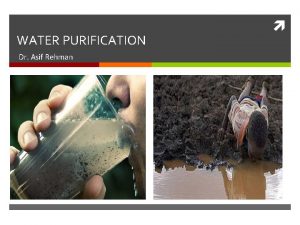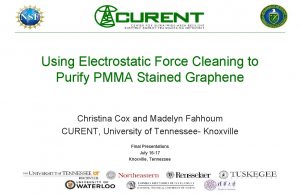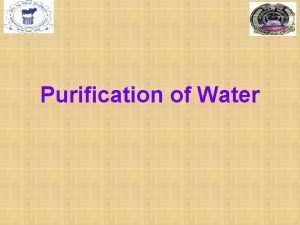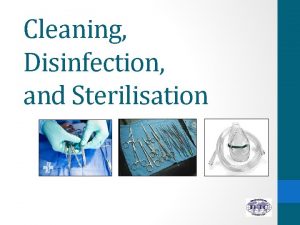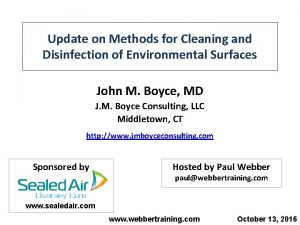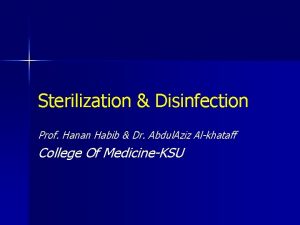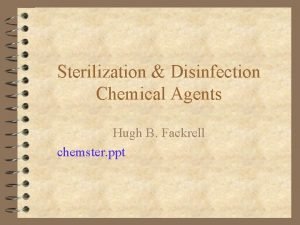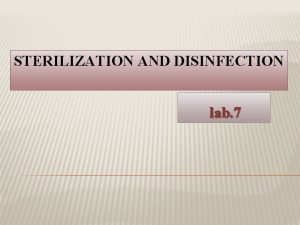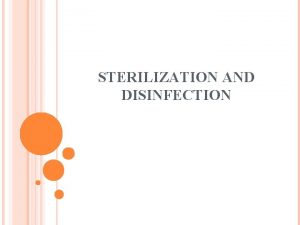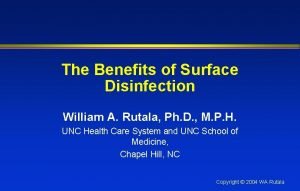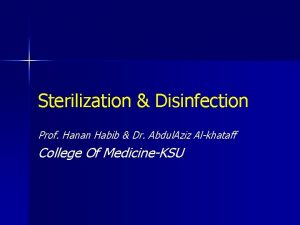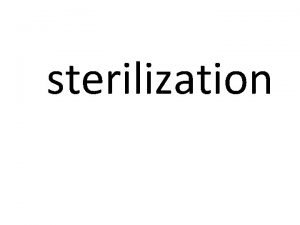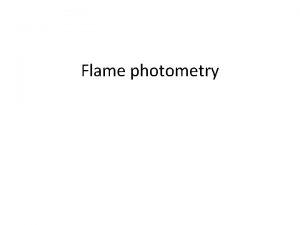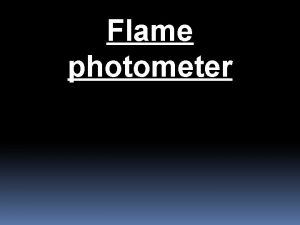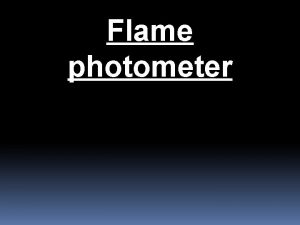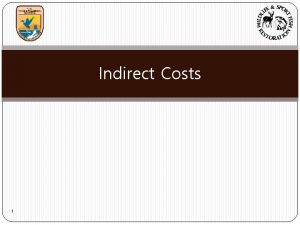2 different techniques Flame disinfection Indirect disinfection Heat













- Slides: 13


2 different techniques (고온 살균의 두가지 방식) • Flame disinfection (불꽃 살균 직접 가열) • Indirect disinfection / Heat exchanger (열 교환 방식의 간접적 살균)

Flame desinfection (불꽃 살균) • Proces exists of several steps (이 과정은 몇가지 단계가 있음) – Filtration of drainwater (배액의 여과작용) – Heated in heat exchanger (열 교환기에 가열) – Water is misted in flame of gassheater (보일러 불꽃으로 물 분사) • Not important in horticulture (원예에서 효과적이지 못함)

Indirect disinfection (열교환기에 의한 간접살균) • Water is heated in opposite flow heat exchangers and kept hot for certain time (두개의 열 교환기가 작동하여 살균 작용) – First step: Untreated water is heated, using the heat of treated water (첫번째 : 살균 처리되지 않은 배액(10 75)과 처리된 배액(90 25)이 서로 교차하며 열 교환) – Second step: Untreated water is further heated, using heat from energy source (두번째 : 살균 처리되지 않은 배액(75 95)과 보일러 에서 나오는 물이 서로 열 교환) • Treated water is cooled in opposite flow heat exchanger, heat is used to heat up untreated water (살균 처리된 배액은 살균 처리되지 않은 배액과 열 교환 하면서 차가워진다)

Energy source (열원) • • (기존 보일러 이용 열 교환기만 설치하면 될 것 같지만) Separate source of heat for the installation (추가적인 분리된 열원을 설치하여야 함) Integrated in source of heat that is already available in the greenhouse (온실 내 설치된 기존 보일러의 열원과 함께) Depends on demand of heat for the crop in summer (여름에 작물에 필요한 열은 적고, 급액량이 많아 배액도 많으므로) Integration in heating-installation in greenhouse can be a complex matter (따로 설치한 가열장치를 활용하여 95 ° C 로 높일 수 있음)


Efficiency (효과) • If no virusses are expected (바이러스를 모두 없애고 싶다면) • 60 °C during 2 minutes (60 °C 에서 2분 동안 처리하면 가능) • Saves 40 % of energy compared to the total desinfection treatment of 95 °C (95 °C 에서 모든 균을 없애는 것보다 에너지 40% 절감 가능)

Advantages (장점) • Partly or full desinfection (부분적 또는 완전한 살균 가능) • Temperature and time of exposure easily checked (온도와 노출시간 등의 점검 보수가 쉽다) • Not sensitive for impurities (불순물이 많아도 살균 가능) • Nematodes can be killed (선충까지 제거 가능) • Fe-chelate stays intact (Fe-chelate의 손상이 없음) • Possible to combine with power plant (축전까지 같이할 수 있다)

Disadvantages (단점) • Expensive technique because of energy costs (에너지 비용 때문에 경비가 비싸다) • Watertemperature after disinfection is slightly higher (살균 후의 배액온도가 비교적 높다) • Water needs to be acidificated to p. H 4. 5 to avoid sedimentation on heat exchanger (열교환기 침전물 방지를 위하여 p. H 4. 5의 산으로 청소하여야 한다.


Ozon (오존 소독) • Ozon (O 3) is processed in generator (오존 발생장치가 있어야 함) • Mixed with water (물과 혼합하면) • Ozon is strong oxidator (오존은 강한 산화력이 있음) • Pathogens are degraded by oxidation (병원균은 오존의 산화에 의해 살균)

Ozon – Dosis (오존 투여량) • Bassinwater: 5 g/m³ (원수 : 5 g/m³) • Drainwater (배액 살균) – Bacteria, Fungi, Viruses: 10 g/m³ (박테리아, 곰팡이, 바이러스 : 10 g/m³) – Nematodes: 20 g/m³ (선충 : 20 g/m³)

Disinfection: Evaluation (살균 확인) • Important to regularly evaluate result of disinfection (주기적 살균 결과 점검 중요) • Watersample (before and after) is analysed mycologically (오존 투입 전 후 배액 샘플의 균학적 분석) • Inoculated on selective medium (선택배지에 접종하여) • Counting colonies (콜로니(균체) 수를 센다)
 Bunsen burner parts
Bunsen burner parts Orthotolidine arsenite test
Orthotolidine arsenite test Electrostatic disinfection chelsea
Electrostatic disinfection chelsea Zoogleal layer
Zoogleal layer Differentiate between disinfection and sterilization
Differentiate between disinfection and sterilization Dry mist disinfection machine
Dry mist disinfection machine Sterilization and disinfection
Sterilization and disinfection Sterilization and disinfection
Sterilization and disinfection Sterilization and disinfection
Sterilization and disinfection Sterilization
Sterilization Role of nurse in sterilization and disinfection
Role of nurse in sterilization and disinfection Rutala
Rutala Disinfection and sterilization
Disinfection and sterilization What is sterilization
What is sterilization

